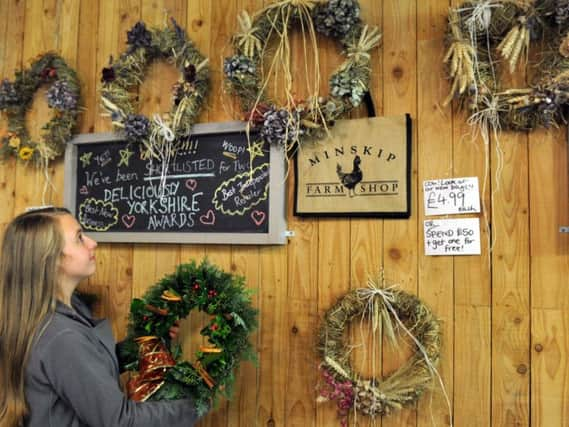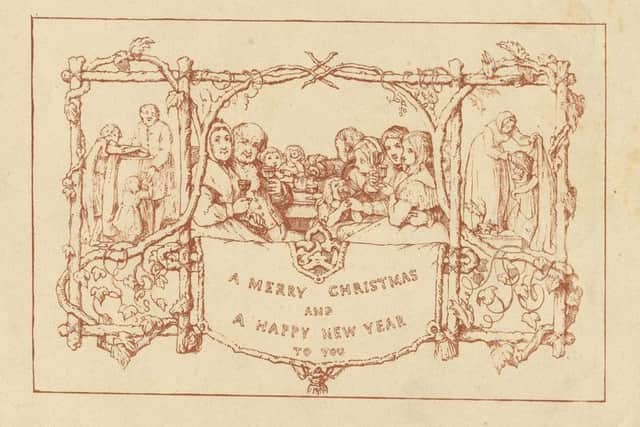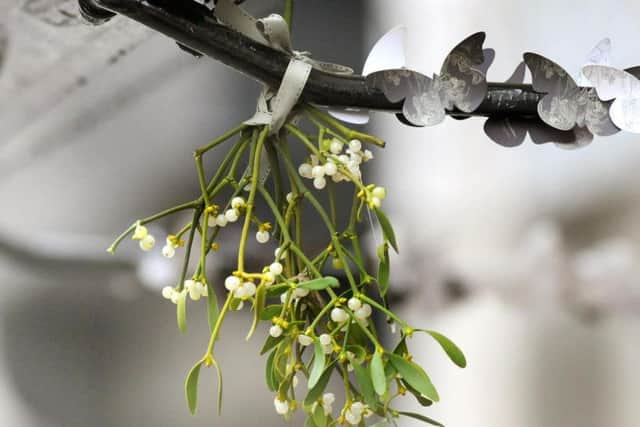St Francis of Assisi, Martin Luther and the origins of our Christmas traditions


It was actually St. Francis of Assisi who introduced Christmas Carols to formal church services. Centuries later Oliver Cromwell then banned carols because he thought that Christmas should be a very solemn day and he only tolerated a sermon and a prayer service.
As for the carols themselves Silent Night was written in 1818 by an Austrian priest. He was told on Christmas Eve that the church organ was broken and wouldn’t be ready in time. He was so saddened by this as he couldn’t imagine a Christmas without music, that he decided to write a carol that could be sung by the choir accompanied by guitar music.
Advertisement
Hide AdAdvertisement
Hide AdEighty years ago at the beginning of December Rudolph the Red-Nosed Reindeer made his first ever appearance. He featured in a colouring book written by Robert L May to be given away to children at Christmas time at Montgomery Ward, a well-established Chicago department store. It had given away these books for a number of winters before deciding to economise by publishing its own book which went on to an amazing figure of nearly two and a half million copies.


Meet the multimedia artists who have brought a touch of Potteresque magic to Harewood HouseMay was scratching his head for how best to pen a Christmas story about a reindeer. He was in his study and looking out of his window but a thick fog had descended from nearby Lake Michigan and it impaired his view. A flash of inspiration came to him. “A bright red nose that would shine through fog like a spotlight.” Rudolph is usually depicted as the leading reindeer though he is only a young buck with adolescent antlers to go with his distinctive nose.
As for the stockings awaiting Santa on his route, their hanging on the hearth on Christmas Eve in the expectation of being filled with presents the next morning is a custom that goes back about 400 years. It derived from Holland where children placed their wooden shoes next to the hearth the night before the arrival of St Nicholas. They then filled their shoes with straw and food for the donkey that carried the gifts.
In exchange St Nicholas would leave them a small gift such as small cakes and fruits. Stockings were later substituted for the shoes in Britain, most of Europe and across North America.
Advertisement
Hide AdAdvertisement
Hide AdThe Christmas tree was first decorated with lights supposedly in the 16th century by Martin Luther, the Protestant reformer. He was so taken with the Christmas night sky that he wished to bring “the lights of the stars”, as he called them, into the home of his family. He used the candlelit tree as a symbol of Christ’s heavenly home.


Many of our Christmas customs however are actually carry-overs from pre-Christian celebrations. Hanging gifts on trees is supposed to stem from the tree worship by the Druids who believed that the tree was the giver of all good things. From simply putting lights on the tree came decorating it with ornaments, such as candles, fruit and paper flowers, messages and notes. Small gifts then emerged in later centuries leading to our customs today.
Bettys and the art of Christmas window displaysTinsel on the Christmas Tree is said to have been started by a woman whose husband died. She was left to bring up a large family of children herself but was so determined to give them a happy Christmas that she prepared a tree and decked it with tinsel to surprise them on Christmas Day.
In Christmas tree decorations, angels are usually portrayed as blondes in girl’s blouses and sandals. In the Bible, however, angels are muscular figures who frequently goad humans into fistfights. Life isn’t all harps and heavenly choirs for angels; there’s a strict career structure. The only angels mentioned by name in the Bible are archangels who are the eighth-ranking order of angels.
Advertisement
Hide AdAdvertisement
Hide AdThe Druids are also partly responsible for the use of mistletoe at Christmas time. They regarded it as sacred and made certain that it never touched the ground.
They dedicated it to the Goddess of Love, which explains the kissing that goes on underneath it. Originally, when a boy kissed a girl, he plucked a berry from the cluster and presented it to her. When the berries were gone, so were the kisses.
The notion of a wreath with holly, red berries and other decorations began around the 17th Century. Holly, with its sharply pointed leaves, symbolised the thorns in Christ’s crown-of-thorns and the red berries the drops of Christ’s blood. So a wreath at Christmas signified a home that celebrated the birth of Christ.
As for our Christmas cards, the first one was printed in England for Sir Henry Cole in 1843. He was a busy man looking to save time with his own Christmas letters, but also interested in encouraging the expansion of the postal system.
Advertisement
Hide AdAdvertisement
Hide AdOne thousand copies of the card were sold at one shilling each. The first commercial Christmas card came three years later, featuring a drawing of family members happily toasting each other with glasses of wine. It wasn’t until the 1860s that the production of cards accelerated, bringing in its wake cheaper printing methods.
As for our crackers, they originated in the 1840s with a certain Tom Smith who owned a sweet shop in London. He discovered that people liked sugar almonds, but while he was in France he discovered a variety of sweets wrapped up in a twist of paper. These ‘bonbons’ were so popular that Tom decided to copy them.
Why Yorkshire's Christmas tree growers are looking to see their sales increase after BrexitWhen he noticed that young men were buying them to give to their sweethearts, he began to place ‘love mottos’ on small slips of paper inside the sweet wrapping. In 1846 his thoughts turned towards Christmas and instead of sweets he decided to pop toys and novelties inside the twisted wrapping. He experimented with this and with the idea of producing a wrapping that could then be pulled apart. Hence the cracker as we know it today.
As for the dinner itself goose used to be the customary Christmas fare right up until the moment Henry VIII took it upon himself to tuck into a turkey. And as for mince pies they were once shaped like mangers and are thought to date back to the sweetmeats formerly presented at the Vatican on Christmas Eve.
Advertisement
Hide AdAdvertisement
Hide AdThese days we call December 26th Boxing Day but it was traditionally known as St Stephen’s Day. The notion of ‘Boxing Day’ came about because money was collected in alms-boxes placed in churches during the festive season and then distributed to the poor and needy after Christmas.
Some priests in Australia advise you to say “Happy Christmas”, not “Merry Christmas”, because Merry has connotations of getting drunk which brings its own problems. One should say “Happy” instead.